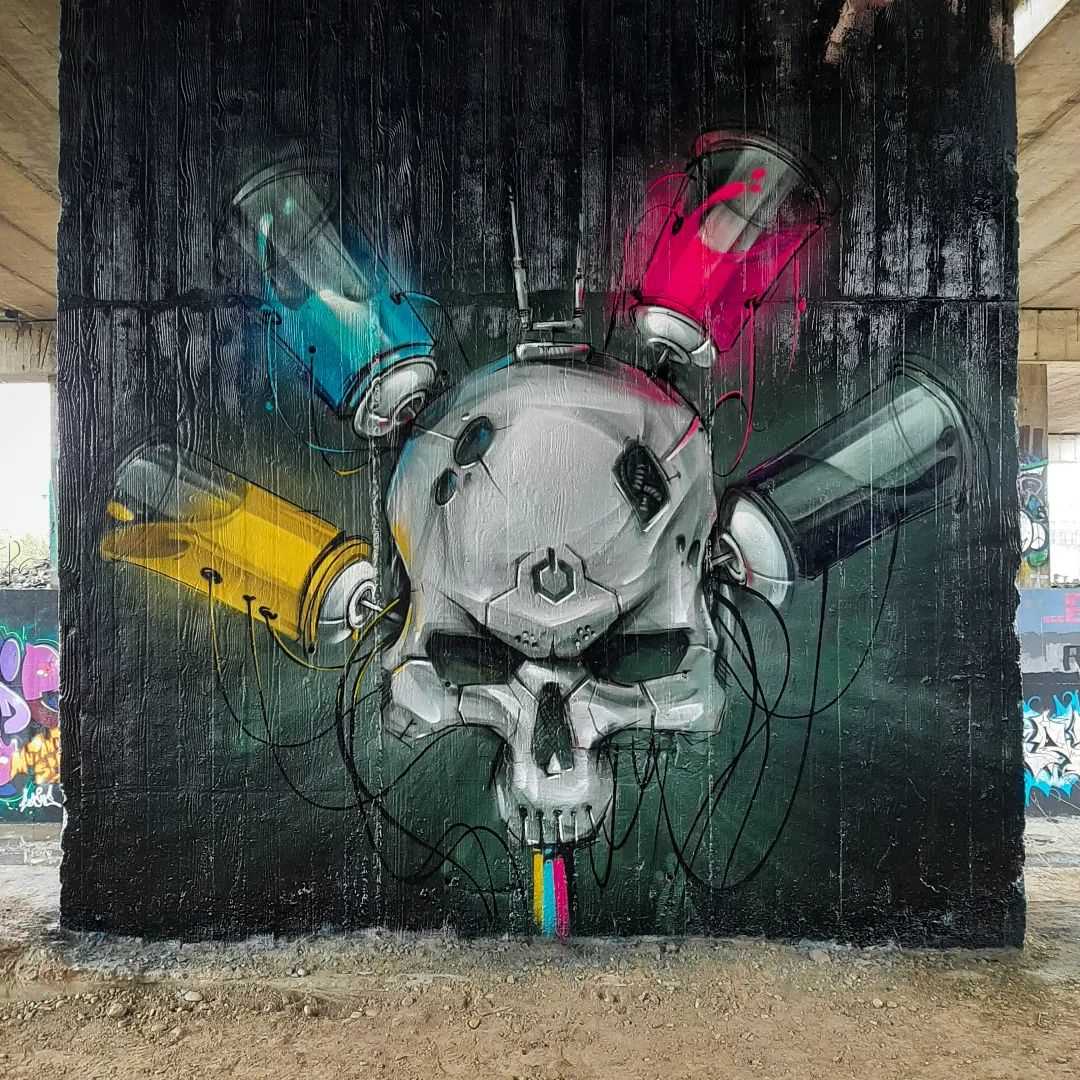Street art has evolved from the realms of graffiti and vandalism to become a recognized and celebrated form of artistic expression. In the vibrant world of abstract street art, artists use vibrant colors, bold shapes, and unique techniques to create captivating murals that bring life and energy to urban spaces. These colorful creations not only transform the physical appearance of cities, but also serve as a powerful reflection of the diverse cultures and identities that make up our modern urban landscapes.
One of the defining characteristics of abstract street art is its ability to evoke strong emotions and provoke thought. As viewers walk through the streets adorned with these murals, they are immersed in a world of vivid colors and dynamic patterns, transporting them to a realm where imagination knows no bounds. These works of art break free from the constraints of traditional art forms, pushing boundaries and challenging conventional norms.
The artists behind abstract street art often draw inspiration from a multitude of sources, including their surroundings, cultural heritage, and personal experiences. Each mural tells a unique story, a personal narrative that invites viewers to interpret and connect with the artwork on a deeply personal level. The use of abstract shapes and symbols allows for a wide range of interpretations, sparking conversations and fostering a sense of community among those who encounter these visually striking pieces.
Abstract street art is not limited to traditional canvases and galleries; it thrives on the streets, open for all to see and appreciate. It takes art beyond the confines of institutions and brings it directly to the people. This accessibility is a key aspect of its charm and appeal, as it allows individuals from all walks of life to engage with and be inspired by these captivating works of art.
The Origins of Abstract Street Art

Abstract street art is a vibrant and dynamic form of artistic expression that has its roots in the early 20th century. It emerged as a response to the urban environment, reflecting the diverse cultures, communities, and socio-political issues of the time.
The origins of abstract street art can be traced back to the graffiti movement of the 1960s and 1970s, particularly in cities like New York and Philadelphia. Graffiti artists began to experiment with new techniques and styles, pushing the boundaries of traditional graffiti and exploring new ways to convey their messages.
Exploring New Techniques and Styles
One of the key aspects of abstract street art is its emphasis on experimentation and innovation. Artists began to move away from traditional lettering and started to incorporate abstract shapes, lines, and colors into their work. This departure from traditional graffiti allowed artists to explore new ways of expressing themselves and their ideas.
Stencils and wheatpasting became popular techniques in the early days of abstract street art. Artists would create intricate stencils and use them to quickly reproduce their work on various surfaces. Wheatpasting involved creating a paste from flour and water to adhere posters and artwork to walls, creating striking visuals that could be seen by a large audience.
As the movement evolved, artists began to experiment with different materials, such as spray paint, markers, and paint rollers, to achieve different effects. These materials allowed for greater versatility and freedom of expression, giving artists the ability to create intricate and vibrant designs on a larger scale.
Reflecting the Urban Environment
Abstract street art is deeply rooted in the urban environment. It serves as a visual representation of the social, cultural, and political issues that affect urban areas. Artists use their work to comment on issues such as inequality, consumerism, and environmental concerns.
The vibrant colors and bold shapes often found in abstract street art are a reflection of the energy and diversity of urban culture. The use of abstract and non-representational forms allows artists to convey complex ideas and emotions in a visually striking and accessible way.
Today, abstract street art continues to evolve and thrive in cities around the world. It has become a powerful form of artistic expression that not only beautifies urban spaces but also challenges societal norms and sparks important conversations.
The Vibrancy of Color
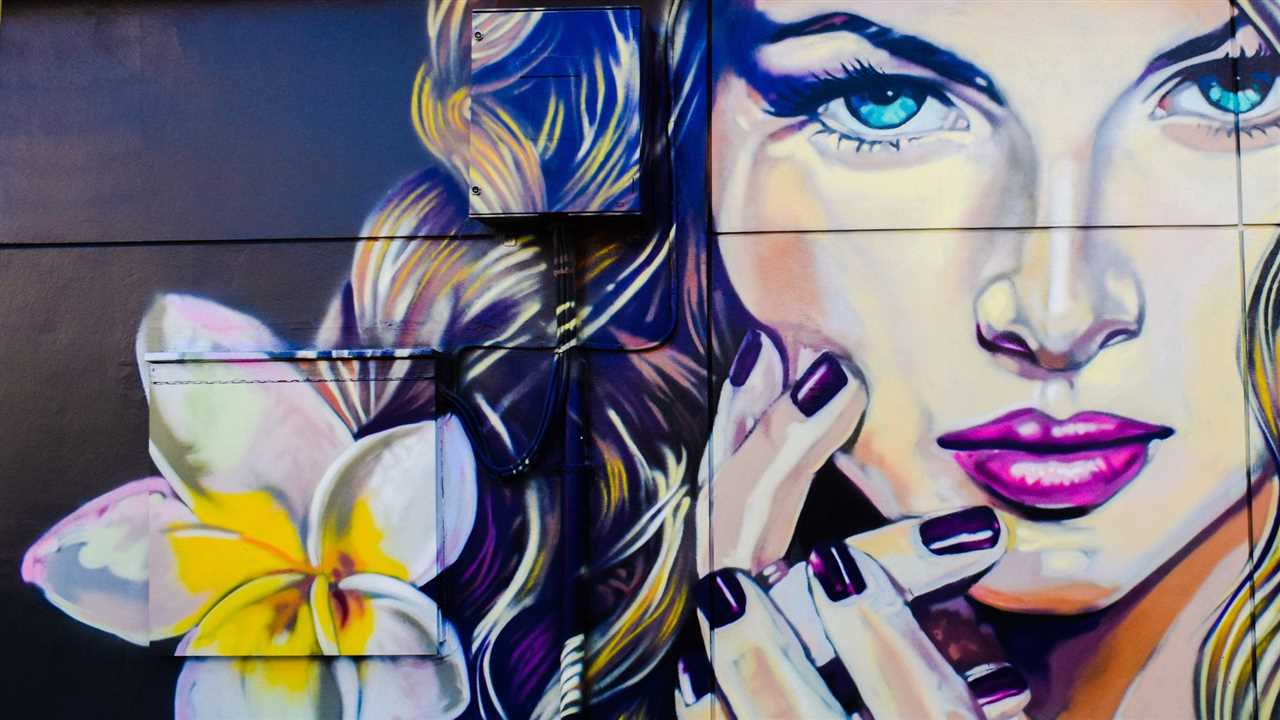
Color plays a central role in the vibrant world of abstract street art. From bold and bright graffiti tags to intricate and multi-layered murals, color is used to captivate and express the energy of urban culture.
Abstract street art often features a wide range of colors, including primary hues like red, blue, and yellow, as well as secondary and tertiary colors. These vibrant shades are not only visually striking but also evoke emotions and create a sense of movement and liveliness.
Artists use color to convey meaning and enhance the impact of their work. For example, warm colors like red and orange can communicate passion and energy, while cool colors like blue and green can evoke a sense of calm or melancholy. By using a combination of contrasting and harmonious colors, street artists create dynamic compositions that grab the viewer’s attention and invite them to interpret the artwork in their own way.
Color also adds depth and dimension to abstract street art. Different shades and tones create visual illusions, bringing the artwork to life and making it appear three-dimensional. Shadows and highlights created by the interplay of light and color add texture and realism to the piece, enhancing its overall vibrancy and visual impact.
Overall, the vibrant colors used in abstract street art not only reflect the energy and diversity of urban culture but also serve as a powerful form of creative expression. Through the skillful use of color, street artists transform blank walls and public spaces into captivating works of art that engage and inspire viewers.
The Creative Process
Creating vibrant abstract street art is a unique and expressive process that allows artists to showcase their creativity and capture the energy of urban culture. The process begins with a spark of inspiration, which may come from the artist’s own experiences, observations, or emotions.
Once the artist has an idea in mind, they begin by selecting the perfect location for their artwork. Whether it’s a blank wall, a rundown building, or a busy street corner, the location plays a key role in the final piece. It sets the stage and provides context for the art.
The next step is to gather the necessary materials. This can include a variety of mediums such as acrylic paint, spray paint, markers, and even stencils. Each artist has their own preferred tools and techniques that allow them to bring their vision to life.
With the location and materials prepared, the artist starts to sketch out their design. This can be done on paper first or directly onto the chosen surface. The initial sketch serves as a guide and helps the artist visualize the final composition.
Once the outline is complete, the artist begins to add color and texture to their piece. This is where the magic happens. The vibrant colors and bold strokes create a sense of movement and energy. It’s the moment when the artist’s vision starts to come to life.
Throughout the creative process, the artist may encounter challenges and make adjustments along the way. It’s a constant dance between intuition and technique, as the artist strives to balance their creative expression with the constraints of the medium.
Finally, when the artwork is complete, the artist takes a step back to admire their creation. It’s a moment of triumph and satisfaction, knowing that they have successfully transformed their initial inspiration into a vibrant piece of abstract street art.
The creative process behind vibrant abstract street art is a testament to the artist’s passion, skill, and dedication. It’s a beautiful fusion of imagination and reality, bringing color and life to the urban landscape.
Abstract Forms and Patterns
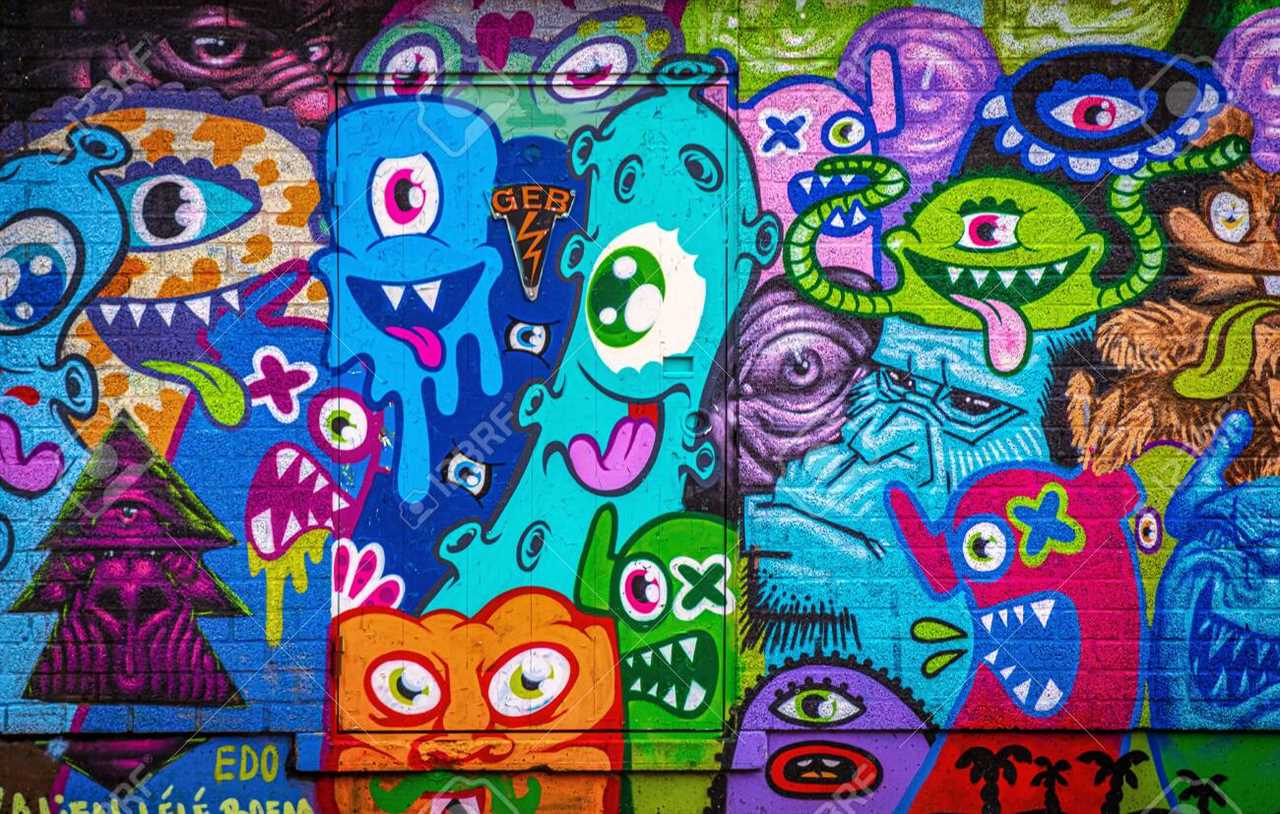
Abstract forms and patterns play a central role in vibrant abstract street art. These elements contribute to the unique and eye-catching nature of the artwork, captivating viewers with their intricate designs and striking visual appeal. Artists often utilize various shapes, lines, and colors to create captivating abstract compositions that stand out in urban environments.
The use of abstract forms allows artists to break away from representational art and explore the realms of pure expression. By removing the constraints of depicting recognizable subjects, artists can delve into a more subjective and emotional realm of art. This freedom allows for the creation of bold and innovative compositions that challenge conventional aesthetic norms.
Intricate Shapes
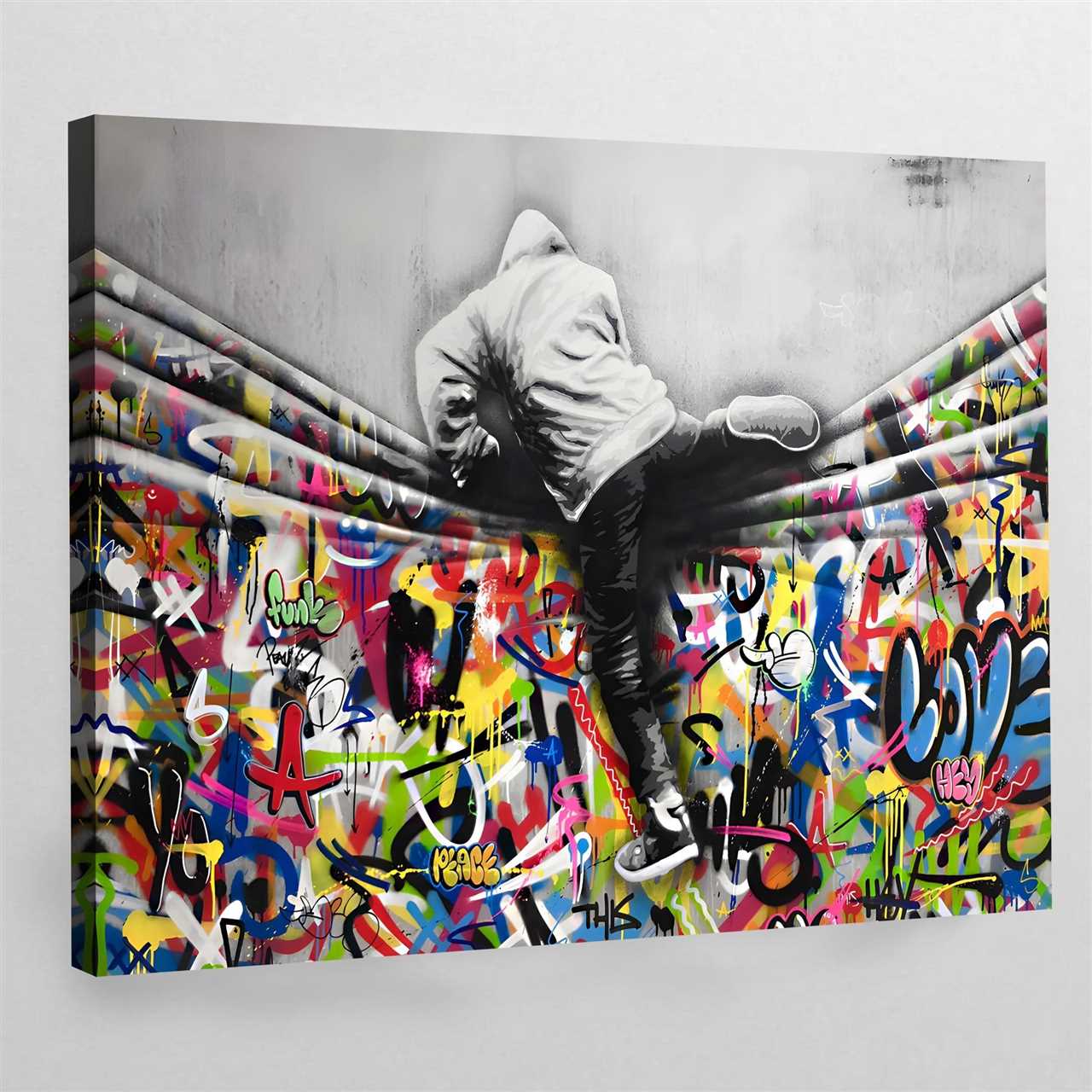
Abstract street art is known for its intricate and unconventional shapes. Geometric forms, organic contours, and intersecting lines create dynamic compositions that engage and intrigue viewers. The juxtaposition of different shapes and their interaction with surrounding elements can create a sense of movement and depth, adding to the overall visual impact of the artwork.
Striking Patterns
Patterns are another vital element in vibrant abstract street art. Artists often incorporate repetitive motifs, texture, and rhythm to create visually captivating patterns that enhance the overall composition. These patterns can range from simple and bold designs to complex and intricate arrangements, adding a layer of complexity and visual interest to the artwork.
Abstract forms and patterns in street art allow artists to push the boundaries of creativity and bring their unique visions to life. The use of these elements adds depth, energy, and character to the urban landscape, transforming dull walls and surfaces into vibrant showcases of artistic expression.
The Impact on Urban Culture
Vibrant abstract street art has had a significant impact on urban culture around the world. This unique form of creative expression has transformed the way we perceive and interact with the cities we live in.
One of the main impacts of vibrant abstract street art is its ability to revitalize urban spaces. Empty walls and dull concrete structures are transformed into vibrant, visually stimulating works of art. These art pieces add a sense of vibrancy and energy to otherwise mundane urban environments. They serve as a visual representation of the creativity and diversity of urban culture.
In addition to revitalizing urban spaces, vibrant abstract street art also fosters a sense of community. Local artists often collaborate with each other and engage with the community to create these large-scale art installations. These collaborative efforts bring people together and create a shared sense of ownership and pride in the urban space.
Vibrant abstract street art also challenges traditional notions of art and its place in society. By taking art out of galleries and museums and placing it in public spaces, these art pieces become accessible to a wider audience. They encourage people to engage with and appreciate art in their everyday lives, breaking down barriers and democratizing the art world.
Furthermore, vibrant abstract street art serves as a platform for social and political commentary. Many artists use their work to address important issues such as inequality, social justice, and environmental concerns. These art pieces spark conversations and raise awareness about these pressing issues, making a powerful impact on urban culture.
Appreciating the Abstract
The vibrant and dynamic nature of abstract street art makes it a captivating form of artistic expression. While traditional art often represents objects or people in a realistic or recognizable manner, abstract art breaks away from these conventions. Instead, it embraces shapes, colors, and textures to convey emotions and ideas.
Unleashing Creativity

Abstract street art encourages artists to unleash their creativity and imagination without any limitations. It allows them to experiment with different techniques and materials, pushing the boundaries of what is considered traditional art. By embracing abstraction, artists can express themselves freely and create unique pieces that challenge the viewer’s perception.
A Visual Symphony

Abstract street art is often a symphony of colors and shapes that come together harmoniously on the urban canvas. Each vibrant stroke and bold brushwork contribute to the overall composition, creating a visual feast for the eyes. The juxtaposition of different elements creates a sense of depth and movement, making the artwork visually engaging and captivating.
The abstract nature of street art also invites interpretation and subjective perception. Viewers are encouraged to bring their own experiences and emotions to the artwork, making it a personal and interactive experience. The lack of concrete representation allows the artwork to transcend language and cultural barriers, resonating with people from different backgrounds.
To fully appreciate abstract street art, it is essential to let go of preconceived notions and embrace the beauty of the unknown. By immersing oneself in the vibrant colors and intricate details, one can experience the sheer energy and creativity of the artist. Whether it’s a small mural or a large-scale installation, abstract street art adds vibrancy and character to urban landscapes, making cities come alive with artistic expression.
Famous Abstract Street Artists
| Name | Country |
|---|---|
| Banksy | United Kingdom |
| Keith Haring | United States |
| Osgemeos | Brazil |
| Invader | France |
Preserving Abstract Street Art
Abstract street art is a creative and colorful expression of urban culture that can be found in cities around the world. It often features vibrant and eye-catching designs that bring life and energy to otherwise plain and mundane spaces.
However, its ephemeral nature means that these artworks are often at risk of being erased or painted over. The transient nature of street art is part of its charm, but it also means that these artworks may not be appreciated or preserved for future generations.
Appreciating the Value
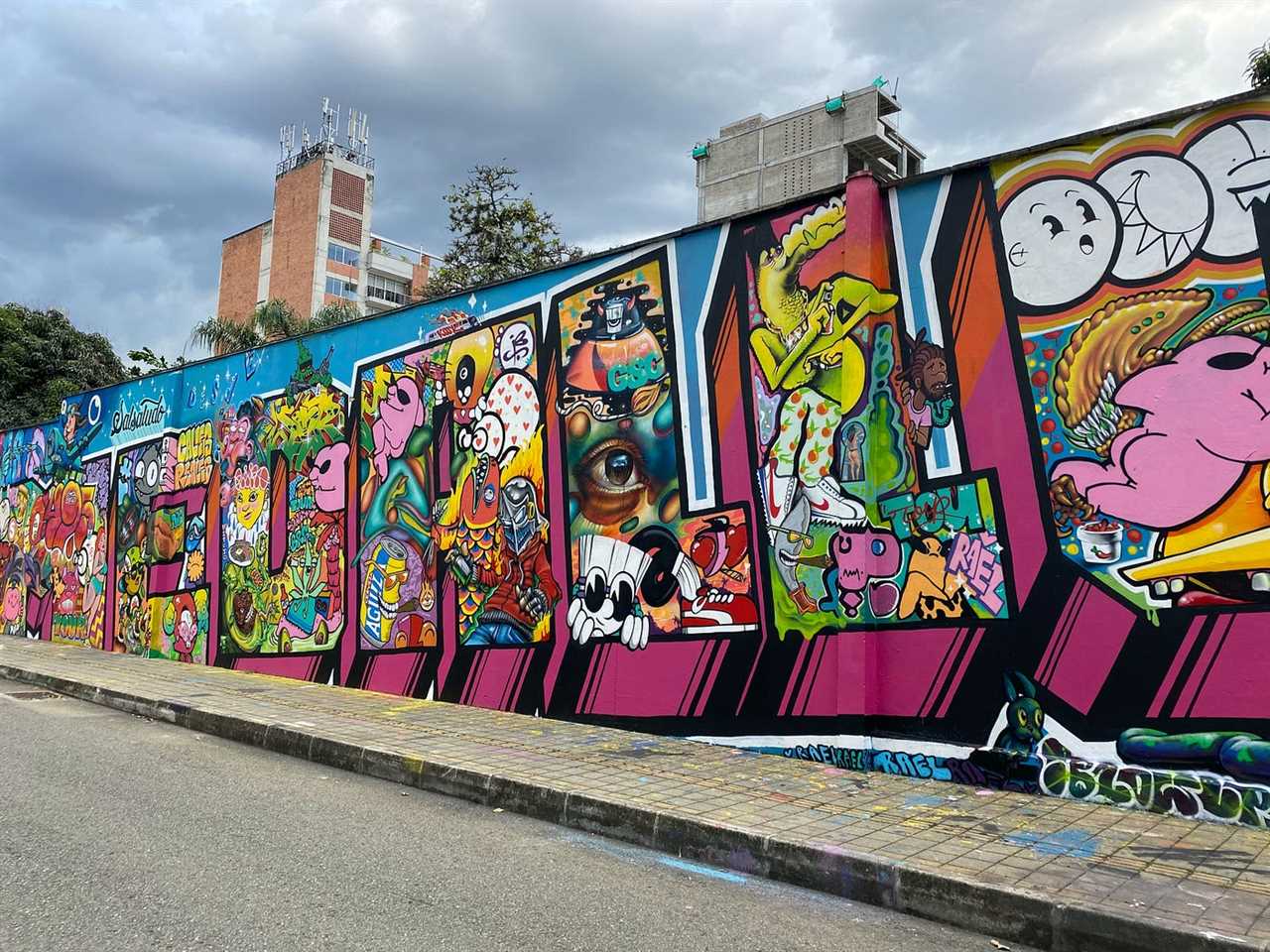
Preserving abstract street art is important because it allows for the appreciation and celebration of urban art culture. These artworks bring beauty and inspiration to our cities and serve as a reflection of the communities they belong to.
Abstract street art often conveys powerful messages and sparks important conversations about social issues, politics, and personal expression. By preserving these artworks, we honor and value the artistic and cultural significance they hold.
Preservation Strategies
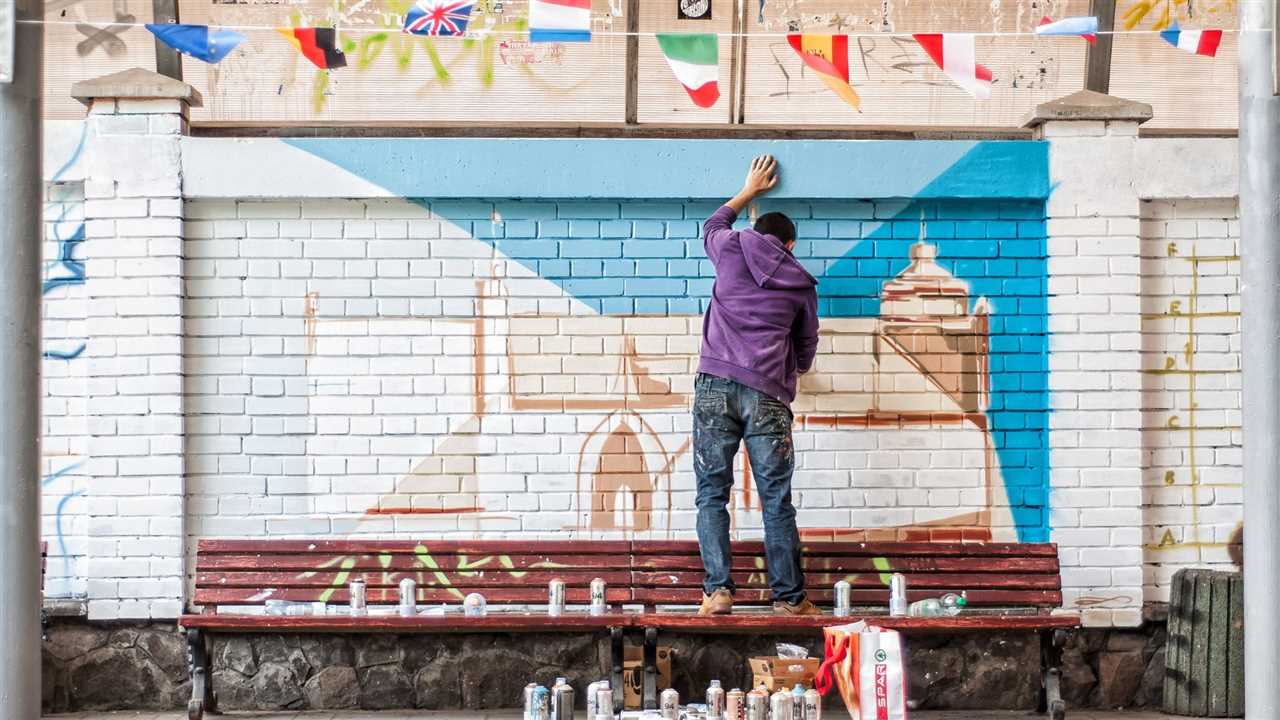
Preserving abstract street art can be a challenge, but there are strategies that can help protect these artworks:
- Documentation: Photograph and record the artwork to create a lasting record of its existence.
- Legal Protection: Advocate for legal protection of street art, working with local governments and organizations to establish guidelines and policies.
- Community Engagement: Involve the local community in the preservation process, fostering a sense of ownership and responsibility.
- Mural Restoration: When artwork becomes damaged or faded, collaborate with artists to restore and maintain the artwork’s original integrity.
Through these preservation strategies, we can ensure that abstract street art continues to inspire and captivate the imaginations of future generations.
Celebrating Diversity in Urban Landscapes

Urban art, particularly vibrant abstract street art, serves as a manifestation of the diverse cultures that thrive within urban landscapes. In many cities around the world, the streets are adorned with colorful murals, graffiti, and installations that celebrate the rich tapestry of society.
Embracing Multiculturalism

Abstract street art is a powerful expression of multiculturalism, showcasing the myriad of ethnicities, languages, and traditions that coexist within a city. It serves as a visual reminder that diversity should be embraced and celebrated.
Through the use of vibrant colors and bold shapes, urban artists capture the vibrancy and uniqueness of different cultures. They explore themes such as identity, belonging, and social equality, shedding light on the experiences of marginalized communities and challenging societal norms.
An Outlet for Self-Expression

For many artists, vibrant abstract street art provides a platform for self-expression and a way to share their personal experiences. By incorporating a wide range of styles, techniques, and materials, these artists create visually captivating pieces that reflect their emotions and thoughts.
Moreover, street art serves as a form of resistance and a means of reclaiming public spaces. In areas that may be neglected or forgotten, these artworks inject life and color into the urban landscape, transforming bleak environments into vibrant and culturally rich communities.
Vibrant abstract street art not only adds beauty to our urban landscapes, but also stimulates conversations about diversity, inclusion, and social justice. It invites us to appreciate and respect the differences that make our cities thrive.

I am a mural enthusiast and a fervent admirer of street art. Rather than creating murals myself, I am passionate about collecting them. My love for street art knows no bounds. I am dedicated to curating and cherishing these artworks that grace the streets. My collection stands as a testament to my profound appreciation for this form of artistic expression.
read about me



